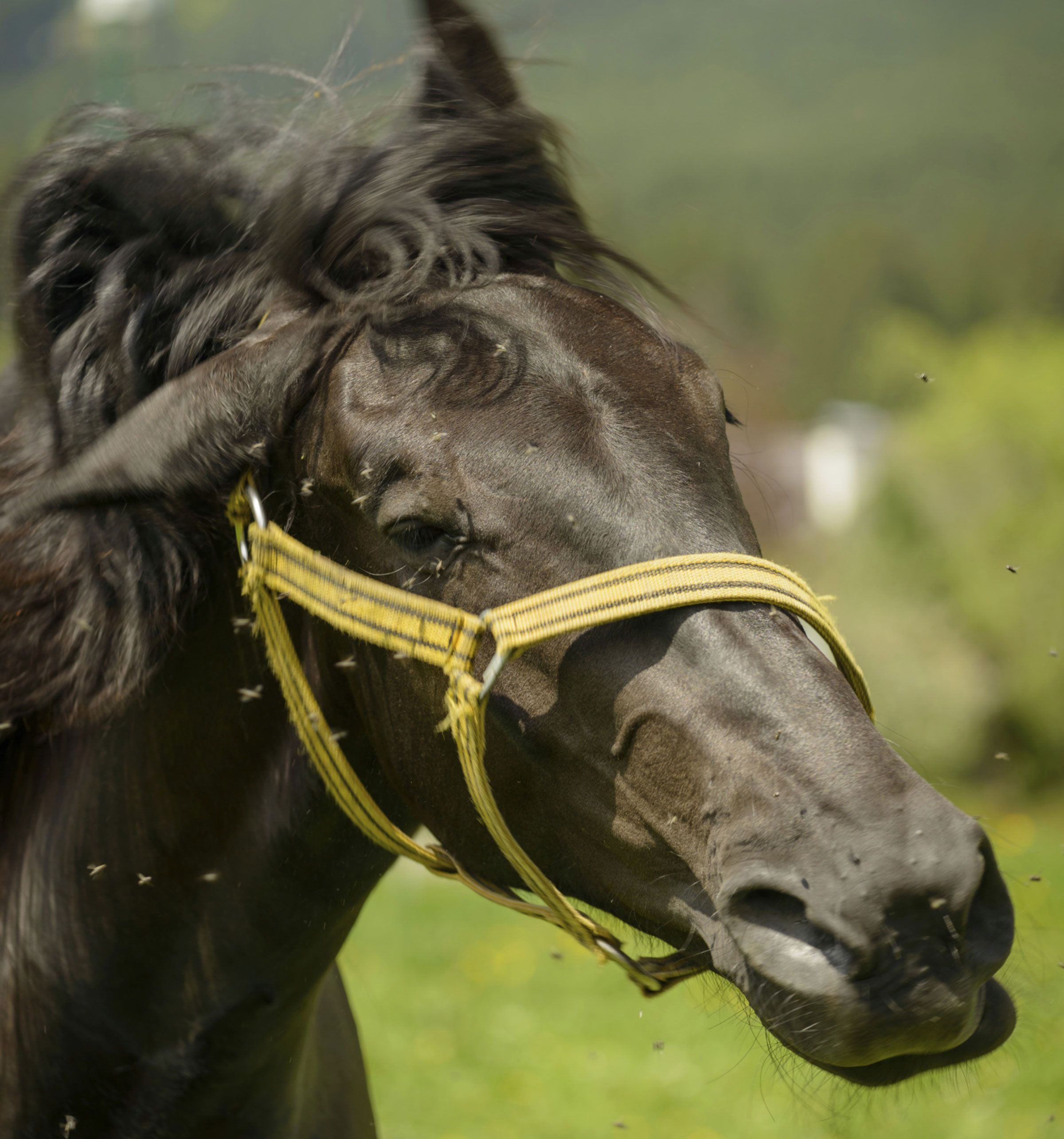 Flies can be annoying and can carry disease.
Flies can be annoying and can carry disease.There are many ways to protect your horses against external parasites, but one of the most common is to use insecticides or repellents on the animal. Following is information from the University of Kentucky College of Agriculture about the different main classifications of insecticides and repellents to help you better understand their use.
Biting and nuisance flies, mosquitoes, ticks and lice (ectoparasites) can have a tremendous impact on horse comfort, performance, and health. Unfortunately, in many situations pest breeding sites or harborages cannot be eliminated or reduced sufficiently. Protection often must be focused on the animal, usually accomplished by insecticides or repellents.
Both can play a vital role in protecting horses from a wide range of ectoparasites. While only a few active ingredients are labeled for use on horses, they have been formulated into an array of products and application options.
A product’s active ingredients are listed below the brand name of the pesticide. Pyrethrins, or closely-related pyrethroids, are the most common constituents in commercial equine products. Some are ready-to-use (RTU), while others are concentrates that must be diluted before application. The percentage of active ingredients in ready-to-use insecticides can range from 0.1% to 45%; higher concentrations generally should provide longer protection.
Pyrethrins are a mixture of materials with insecticidal properties that are extracted from certain Chrysanthemum flowers. They affect the nervous system of insects and other arthropods by disrupting ion channels so that nerve cells cannot return to their normal “resting” state after transmitting an impulse. Pyrethrins work against a wide spectrum of arthropods, provide a quick “knockdown” of the pest, and they have a very low toxicity to mammals and humans. They are unstable in light or air, so they are degraded very quickly following application. Usually, pyrethrins are formulated with piperonyl butoxide, a synergist that enhances the activity of the pyrethroid. Skin sensitization, rash, or inflammation can occur in some individuals following the initial exposure to any insecticide.
Pyrethroids are synthetic insecticides with chemical structures based upon the natural pyrethrins. They are more stable, so there is a significantly longer period of residual protection. Positive features of the pyrethrins, such as quick knockdown and low mammalian toxicity, are retained. Early pyrethroids, often referred to as “first generation” products, include resmethrin and permethrin. Continued research and development have produced subsequent “generations” such as cypermethrin and zeta-cypermethrin, which can be used at much lower concentrations.
The repellents diethyltoluamide (DEET) and oil of citronella are the active ingredients in some equine products. Oil of citronella is a volatile liquid that is extracted from some dried grasses. Both appear to work by blocking sensors that some pests use to locate hosts.
Application of an insecticide or repellent to horses will not reduce their attractiveness to ectoparasites, but it will have an impact when the pest gets very close or contacts the animal. Therefore, re-infestation pressure will always be high, and feeding will begin as soon as the treatment drops below a minimum effective level. Rain, sweat or dust can quickly reduce normal protection levels.
Discovery of new insecticide and repellent active ingredients may improve animal protection, but the challenge is formidable. Understanding current technology, environmental constraints and management philosophies will continue to make animal protection an art that is improved through individual experience.


